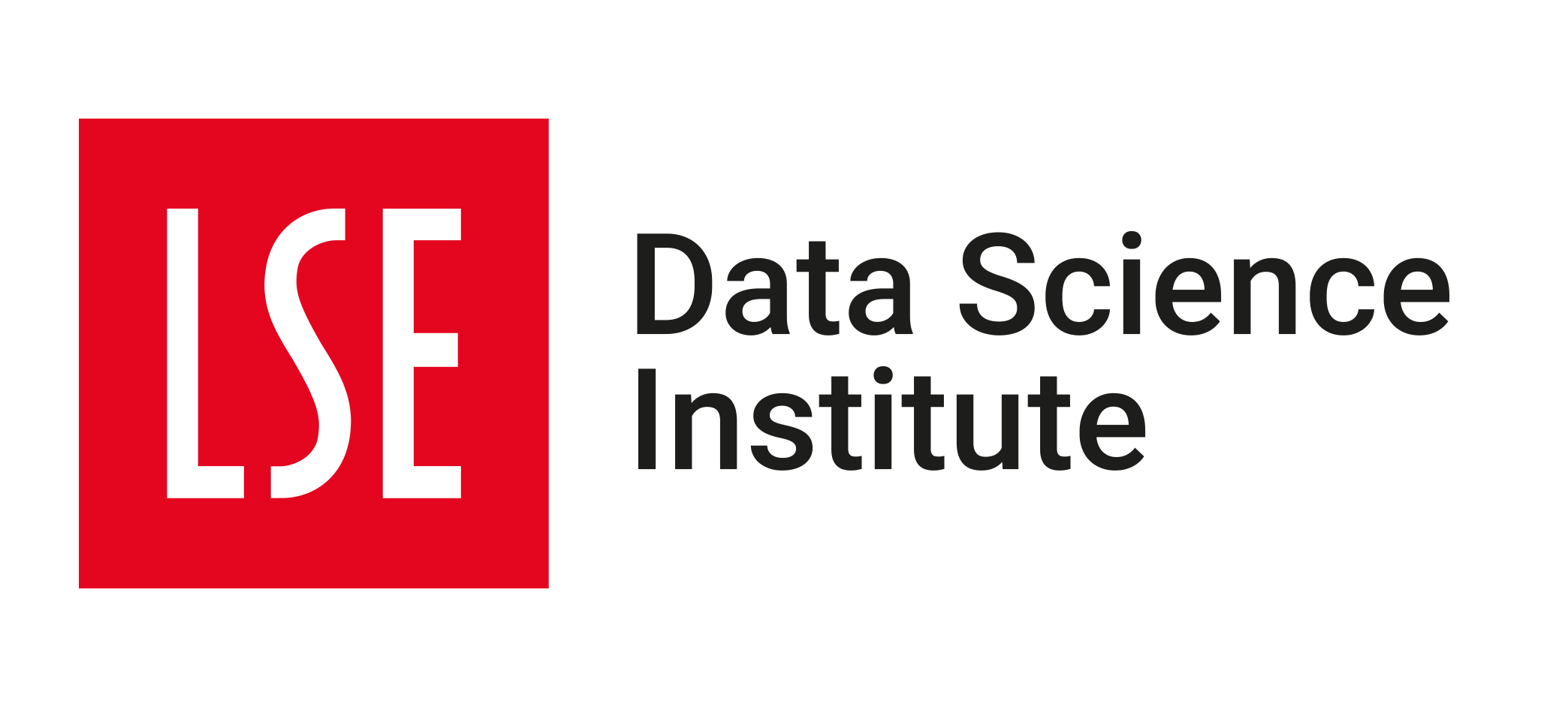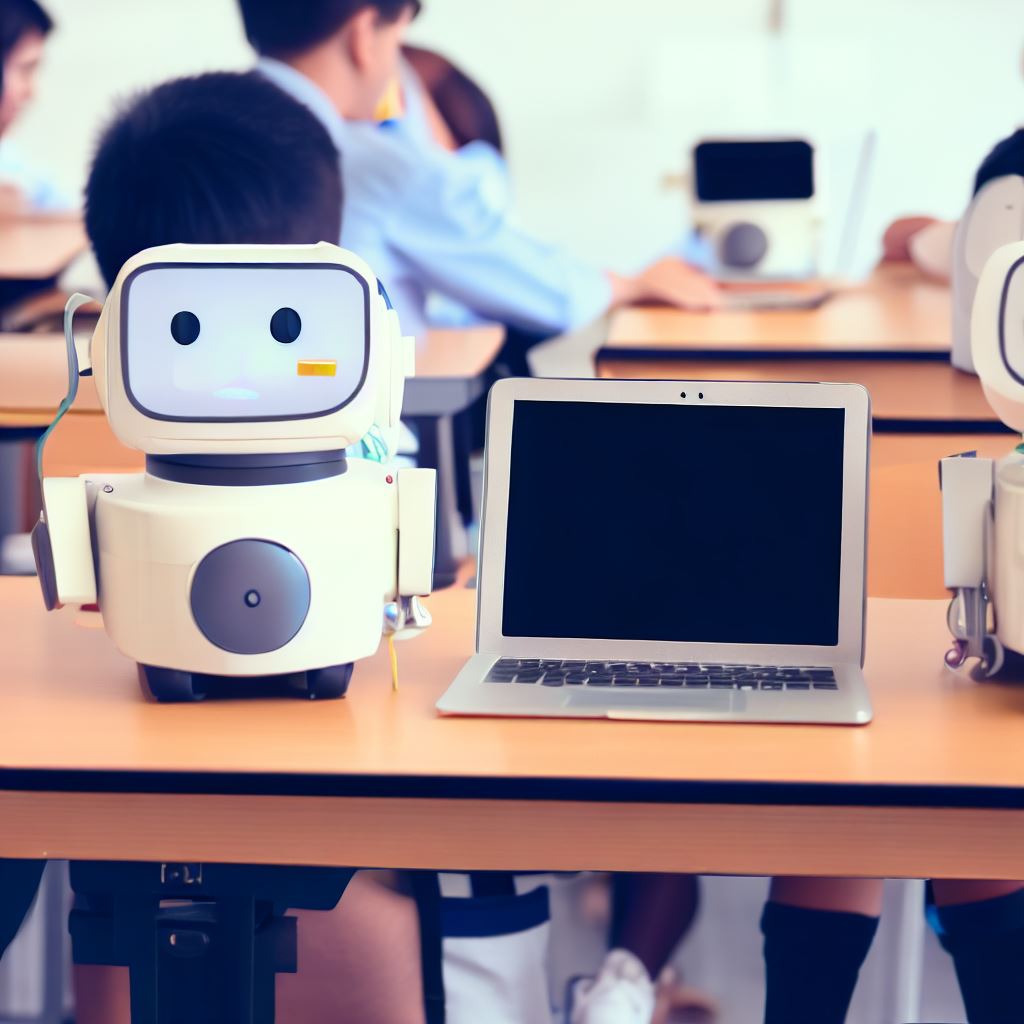🗓️ Week 01
Welcome to the course
LSE DS202 – Data Science for Social Scientists
24 Jan 2025
Who we are
Your lecturer

Assist. Prof. (Education)
LSE Data Science Institute
lecturer
course convenor
- PhD in Computer Science (University of Twente, Netherlands)
- Background: Engineering, Databases, Health Informatics, ML for cybersecurity
- Formerly Research Associate at King’s College London and the University of Edinburgh (School of Informatics)
decision support systems
machine learning applications
databases
provenance
ethical AI/XAI
Teaching Assistants

Data Scientist
The Economist
MSc in Applied Social Data Science (LSE)
guest teacher

Data Scientist
Microsoft
MSc in Data Science (LSE)
guest teacher

Guest Lecturer
Data Science Institute
DPhil in Politics (Oxford University)
guest teacher

Data Scientist
MSc in Statistical Science (Oxford University)
guest teacher
Support Sessions

Research Officer
LSE Data Science Institute and LSE Cities
- 🦸🏻♀️ Runs weekly drop-in sessions for all DSI courses!
DS202W Weekly Drop-in sessions:
- Typically every Wednesday from 10.00 to 11.30am at the COL.1.06 (Visualisation studio) but check announcements and calendar invites for updates.
Administrative Support

Teaching and Learning Administrator
LSE Data Science Institute
Write an e-mail to Kevin:
- if you cannot find the lecture recording on Moodle
- when you need an extension for an assignment
(👉 check LSE’s extension policy) - to request a class group change
(you will be asked to provide a reason for this) - to inform us of any other issues that may affect your studies
The Data Science Institute

- This course is offered by the LSE Data Science Institute (DSI).
- DSI is the hub for LSE’s interdisciplinary collaboration in data science
- ⏭️ Let’s see a few activities that might be of interest to you
Sign up for DSI events at lse.ac.uk/DSI/Events
CIVICA Seminar Series



Follow the seminar series: 🔗 Link
Careers in Data Science
Hear from alumni or industry experts about their career paths and how they got to where they are today.
Latest events:
🗓️ Data Science across industries (03 December 2024- 4.00 to 5.30pm)
Machine learning is transforming large parts of the economy, and data scientists have the opportunity of to apply their skills in an incredibly broad variety of domains. The technical field is in rapid progress and professional roles in continuous development as companies navigate successive waves of technological and economic change. Data scientists must therefore craft skill paths which balance focus on rapid learning with capabilities complementing their domain, organisations and wider industry.
Drawing on his experience from startups, consulting and tech, Christian Svalesen, Senior Machine Learning Engineer at SoundCloud will provide insights into what data science roles and projects can involve across industries. He will share advice on how students can prepare and develop through their professional journey.
Read more about this series of events: 🔗 Link
Careers in Data Science
Hear from alumni or industry experts about their career paths and how they got to where they are today.
Latest events:
🗓️ Navigating Data Science from Academia to Media, and Beyond (23 October 2024 - 4.30 to 6pm)
With the rise in adoption of AI/ML technologies and the increasing demand for data-driven decision-making, data science has become a vital component across many industries, including media. As data science transforms the media landscape - enhancing content personalisation, optimising conversion strategies, and improving audience engagement, it is also becoming an increasingly popular tool for addressing complex business challenges. Navigating a role in this field can be both exciting and challenging.
Tabtim Duenger, Senior Data Scientist at The Economist and Riya Chhikara, Data Scientist at the Economist, both LSE graduates1, will offer insights into their paths to entering the field of data science. They will discuss their experiences in landing their first roles, negotiating their functions and responsibilities within the media sector, and how they use these experiences and networks to continue guiding their careers.
Read more about this series of events: 🔗 Link
Industry “field trips”


‘Winners’ of the upcoming Bank of England trip will be announced soon!
Sign up for DSI events at lse.ac.uk/DSI/Events
Who are you?
| Programme | Freq |
|---|---|
| General Course | 14 |
| BSc in Economics | 11 |
| BSc in Politics and Data Science | 6 |
| BSc in Psychological and Behavioural Science | 3 |
| BSc in Philosophy, Politics and Economics | 2 |
| BSc in Economics and Economic History | 1 |
| BSc in International Social and Public Policy and Economics | 1 |
| BSc in Politics and Economics | 1 |
| BSc in Politics and International Relations | 1 |
| Year | Count |
|---|---|
| 1 | 17 |
| 2 | 10 |
| 3 | 11 |
| 4 | 2 |
Who are you? (cont.)

What is this course about?
![]() Course Brief
Course Brief
What is this course about?
Focus: learn and understand the most fundamental machine learning algorithms
How: practical use of machine learning techniques and its metrics, applied to relevant data sets
![]() Course Brief
Course Brief
What is this course about?
- Focus: learn and understand the most fundamental machine learning algorithms
- No neural networks, no deep learning, no large-scale data
- How: practical use of machine learning techniques and its metrics, applied to relevant data sets
- Some but not a lot of theory, math proofs and derivations
- Lots of coding, examples and exercises
🎯 Learning Objectives
- Understand the fundamentals of the data science approach, with an emphasis on social scientific analysis and the study of the social, political, and economic worlds;
- Understand how classical methods such as regression analysis or principal components analysis can be treated as machine learning approaches for prediction or data mining.
- Know how to fit and apply supervised machine learning models for classification and prediction.
- Know how to evaluate and compare fitted models, and improve model performance.
- Use applied computer programming, including the hands-on use of programming through course exercises.
- Apply the methods learned to real data through hands-on exercises.
- Integrate the insights from data analytics into knowledge generation and decision-making.
- Understand an introductory framework for working with natural language (text) data using techniques of machine learning.
- Learn how data science methods have been applied to a particular domain of study (applications).
📚 Course Structure
How will this course be taught?
How do I prepare for this course?
🧑🏻💻 Labs (90 min each week)
- Purpose: introduce new concepts and tools which will only be explored in more detail in the lectures
- Why? So you can come to the lectures with good questions!
- Typically:
- your class teacher might give you some context about the new tools/algorithms
- you will be given time to work on something by yourself
- there will be moments to share your interpretation of the results of algorithms with the classroom
- You have to attend the lab you are enrolled in. You can’t switch on the day
Important
There might be some preparatory work to do before each lab!
Always check Moodle/the webpage at least a day before coming to the lab.
More about 🧑🏻💻 Labs (90 min each week)
Each week, you will have a roadmap of what to do.
The roadmap will typically contain the following elements:
| Type of activity | Description |
|---|---|
| 🧑🏻🏫 TEACHING MOMENT | Your class teacher deserves your full attention |
| 🎯 ACTION POINTS | Time to follow the steps in the roadmap. Try it for a bit, but if you get stuck, call your class teacher. |
| 👥 IN PAIRS/GROUPS | You will benefit from completing that task with your peers more than doing it alone |
| 🗣️ CLASSROOM DISCUSSION | Your class teacher will facilitate a discussion about the task |
| 📝 SUBMISSION | Submit your work |
👉 Now, let’s navigate our Moodle page to see the 📓 Syllabus and to talk about ✍️ Assessments & Feedback.
If you are reading this but you are not an LSE student, the same content is available on the course’s 🌐 public website
👩🏻🏫 Lectures (2 hours per week)
- The first sessions will have slides, but mostly, it will be live coding
- Feel free to code along with your lecturer
- Pair/group exercises and discussions to interpret results
- Bring a laptop if you can! (💡 you can borrow one from the library)
- Recorded sessions will be available on Moodle on the next working day
Programming
Pre-requisites and assumptions
We assume that you have some basic knowledge of:
Pre-requisites and assumptions
We assume that you have some basic knowledge of:
- Descriptive Statistics
- Some linear algebra
- Programming
- If you took ST102, you should be fine.
- Nothing crazy, mostly matrix operations (simpler than MA107)
- It’s ok if you are new to Python, but do reserve some extra hours in the first weeks to practice the basics.
Teaching Philosophy
- My teaching approach is grounded in empiricism.
- I see learning as a transformative process, something that conduces to change, which is best facilitated by active, experience-focused, and exploration-driven activities.1
- In summary: learning by doing (or said, more bluntly😂, learning by trial and error) serves as the cornerstone of this course.
What does that mean in practice?

Image created with DALL·E via Bing Chat AI bot. Prompt: “An illustration of a person trying to solve a puzzle with pieces that have different symbols and formulas on them. The person is looking at a screen that shows the 📋 Getting Ready guide and has a smile on their face.”
- Frequently, we will present you with tasks that involve new concepts before diving into the corresponding theory or background knowledge.
- For example, I might ask you to consult the
pandasorscikit-learnornumpyor Python documentation instead of explaining it directly.
- For example, I might ask you to consult the
- Reasoning: letting your ‘struggles’ guide the learning process.
- 👉 allow yourself to make silly mistakes and to ask ‘dumb questions’.
- You are very much encouraged to help and learn from each other.
- If this course is too easy for you, try to apply its concepts to your own data sets or to more complex problems and bring us your questions.
- If you feel this teaching style is not working, drop us an e-mail or discuss it during office hours (see 📟 Communication)
AI tools in this course
Do you use ChatGPT, GitHub Copilot, or other AI tools?
LSE Policy on AI tools
There are three official positions at LSE:
Position 1: No authorised use of generative AI in assessment. (Unless your Department or course convenor indicates otherwise, the use of AI tools for grammar and spell-checking is not included in the full prohibition under Position 1.)
Position 2: Limited authorised use of generative AI in assessment.
Position 3: Full authorised use of generative AI in assessment.
👉 This is the position we adopt in this course
Source: School position on generative AI, LSE Website, September 2024
Our policy in this course
- You can use AI tools during lectures, labs, and for your assignments.
- Except when the lecturer or class teachers expressly ask you not to use it.
- When using for assignments, you must acknowledge the use of AI tools and tell us how you used it.
Examples:
“I used ChatGPT to provide an initial solution to Question X. The code ran and worked fine, but as it was not efficient to the standards of vectorisation taught in the course, I had to edit the code myself to fix the issue.”
“I had GitHub Copilot autocomplete on when writing the code for Question X. The code produced was unnecessarily long and didn’t use the
pd.mergecommand I learned in Week 08, so I went back and edited it.”
What do you think of generative AI tools?
The ![]() GENIAL project
GENIAL project
- We see many students using ChatGPT during lectures, labs, and assessments.
- Frankly, most university instructors are clueless as to whether this is helping or hindering your learning.
- So we did some research to try to figure out:
- How are students using generative AI tools in their studies?
- What are the benefits and drawbacks of using generative AI tools?
Participating Courses:
- DS105W (Data for Data Science)
- DS202W (Data Science for Social Scientists)
- ST456 (Deep Learning)
- PP422 (Data Science for Public Policy)
The ![]() GENIAL project
GENIAL project
You can read more about the GENIAL project on the project page.
What we have learned so far:
We haven’t fully analysed the data yet (lots of it!⛰️) but here’s what we can say for now about the good and bad aspects of using generative AI tools in education:
- Good: The students who made the most resourceful use of GenAI remained in control of their learning. They often gave the chatbots a lot of context (“I want to perform web scraping of this website with the library
scrapy, the code must contain functions – no classes – and I want to save the data in a CSV file.”) and would always check the code/output generated by GenAI against the course materials or reputable sources. They were able to identify when the AI was suggesting something that was not correct or not following best practices and would never blindly accept the AI’s suggestions.
The ![]() GENIAL project
GENIAL project
What we have learned so far:
We haven’t fully analysed the data yet (lots of it!⛰️) but here’s what we can say for now about the good and bad aspects of using generative AI tools in education:
- Bad: If you don’t master a subject, GenAI can make you feel like you do. This pattern was frequent, for example, among students who had gaps in their understanding of programming concepts. They would ask the AI to generate code for them, and the AI would produce code that seemed to work but that generated the incorrect response or was so complex, it was virtually impossible to edit.
Read more about it in our preprint:
Dorottya Sallai, Jonathan Cardoso-Silva, Marcos E. Barreto, Francesca Panero,Ghita Berrada, and Sara Luxmoore. “Approach Generative AI Tools Proactively or Risk Bypassing the Learning Process in Higher Education”, LSE Public Policy Review, 3(3), p. 7, 2024.
☕️ Time for a break
Our first proper lecture will start in a few minutes.
“What really is data science? + Python tips”
What do we mean by data science?
Data science is…
“[…] a field of study and practice that involves the collection, storage, and processing of data in order to derive important 💡 insights into a problem or a phenomenon.
Such data may be generated by humans (surveys, logs, etc.) or machines (weather data, road vision, etc.),
and could be in different formats (text, audio, video, augmented or virtual reality, etc.).”
The academic possibilities
- Humans and machines nowadays generate A LOT of data ALL THE TIME
- It has become very cheap to collect and store this data
- This abundance of data opens up new possibilities for research & policy-making
New data to answer old questions:
- How do rumours spread?
- How can we predict unemployment rates accurately?
New questions enabled by new data/new technologies:
- Is social media a threat to democracy/public order?
- Is generative AI a threat to the job market?
We hope that in this reformulated version of the DS202 course, you will learn how to tackle similar questions that are relevant to your field of study.
You might ask:
“How is data science any different from what I have learned in other stats courses?”
Data Science and Social Science
👉 Traditional Statistics in the social sciences: the goal is typically explanation
👉 Data science: the focus is frequently put more on data exploration and prediction
- Data science is heavily influenced by computer science and engineering
- There is a strong emphasis on computational efficiency and scalability (due to big data)
- Many of the algorithms and methods you will learn in this course can be used in both contexts (explanation vs prediction)
- We will try to highlight the differences in these approaches throughout the course
The Data Science Workflow
The Data Science Workflow
It is often said that 80% of the time and effort spent on a data science project goes to the abovementioned tasks.
The Data Science Workflow
This course is mostly about the ‘20%’ stage. Most of the data we will give you is already clean and ready to be modeled with machine learning.
Next week, we will discuss together what it means for a machine to learn something.
But first, a word about programming skills 👉
Let’s get more technical
- Python vs R
Python vs R
A few stats
- Python ranked number 1 in the TIOBE Programming Community index of January 20251(rating of 23.28% and change of +9.32% compared to January 2024) vs R at number 18 (rating of 1.00% and change of +0.27%)
- Python at the top of the IEEE Spectrum rankings of programming languages of 2024, in two aspects of popularity measured (languages in active use among typical IEEE members and working software engineers (the “Spectrum” ranking) and languages that are in the zeitgeist (the “Trending” ranking)) and is second in the last one (languages that are in demand by employers (the “Jobs” ranking)). R sits at rank 20 in the “Spectrum” ranking, rank 17 in the “Trending” one and at rank 21 for the “Jobs” ranking (see details about the rankings here and the rankings’ methodology here)
- the PYPL PopularitY of Programming Language index, created by analyzing how often language tutorials are searched on Google, also has Python at the top in January 2025 (share 29.8% with +1.7% increase compared to last year). R ranks at number 6 (share 4.63% and no increase since last year).
Python vs R
- Python is a general-purpose programming language
- It is used for web development, scientific computing, data science, advanced machine learning tools (deep learning), etc.
- R is more niche. It is a programming language created for statistical computing
- You can do many other things with R, but it is mostly used for statistics and general data science (except for heavy Machine Learning)
Some Python basics
Data types
- The python equivalent:
var = "value" # A string. Single quotes are OK too
var = """I want to write
sentence without caring for line breaks"""
# Python also has an additional option (triple double quotes!!!) to simplify the handling of strings that contain newlines
var = 2.2 # A float
var = 2 # An int (🏅)
var = float(2) # A floatIn Python, less is more! Always, be explicit when using the greedier data types…
Python basics
Python lists
- We can put basic data types (i.e strings, integers, floats) in collections of data (e.g lists, dictionaries, tuples)
returns:
[1, 2, 3, 4]You could use the append method to add elements to a list:
returns:
[1, 2, 3, 4, 5]You could also use the extend method to add several elements in one go:
returns:
[1, 2, 3, 4, 5, 6, 7, 8]Yet another way to elements to a list is as follows:
returns:
[5, 7, 9, 8, 0, 4]Python basics
Python lists (cont.)
- Lists don’t need to contain a single data type
- You can define lists of lists and lists of lists of lists, etc…
Python basics
Other types of data collections
- Aside from lists, you also have tuples
returns
(1, 2, 3)returns
2What do you think is the difference here?
Tuples are immutable!
Is there a way to update tuples? Yes!
First method
Second method
Python basics
Other types of data collections
Aside from lists and tuples, you also have dictionaries and other more complex data collection types (for these, see the documentation).
A Python dictionary is a collection of key-value pairs, where each key corresponds to its associated value. For example:
returns:
{'first_name': 'Jane', 'last_name': 'Doe', 'city': 'London'}Python basics
Some basic operations
- If you run:
you will get the type of your Python object.
The above returns:
<class 'dict'>
<class 'float'> #since var=float(2.0) Python basics
Something, we need to perform operations repeatedly
We have loops (for or while loops):
(Note that Python needs indentation and you absolutely can’t mix tabs and spaces!)
And you have list comprehensions (as well as dictionary comprehensions)
# dictionary that associates a number with its square
squares = {x: x**2 for x in range(10)}
print(squares)returns
{0: 0, 1: 1, 2: 4, 3: 9, 4: 16, 5: 25, 6: 36, 7: 49, 8: 64, 9: 81}# code that produces a dictionary that only contains the pair numbers from the original dictionary
original_dict = {"a": 1, "b": 2, "c": 3, "d": 4}
filtered_dict = {k: v for k, v in original_dict.items() if v % 2 == 0}
print(filtered_dict){'b': 2, 'd': 4}Python basics
Custom functions definition
Python basics
Custom functions definition
Let’s define functions based on the loops and list comprehension from before. We’ll do some code profiling!
import cProfile
def for_loop_example():
result = []
for i in range(100000):
result.append(i * 2)
def while_loop_example():
result = []
i = 0
while i < 100000:
result.append(i * 2)
i += 1
def list_comprehension_example():
result = [i * 2 for i in range(100000)]
# Profile each function
print("Profiling for loop:")
cProfile.run("for_loop_example()")
print("\nProfiling while loop:")
cProfile.run("while_loop_example()")
print("\nProfiling list comprehension:")
cProfile.run("list_comprehension_example()")Python basics
Results from the loops and list comprehension profiling
Profiling for loop:
100004 function calls in 0.022 seconds
Ordered by: standard name
ncalls tottime percall cumtime percall filename:lineno(function)
1 0.013 0.013 0.021 0.021 <python-input-66>:3(for_loop_example)
1 0.001 0.001 0.022 0.022 <string>:1(<module>)
1 0.000 0.000 0.022 0.022 {built-in method builtins.exec}
100000 0.008 0.000 0.008 0.000 {method 'append' of 'list' objects}
1 0.000 0.000 0.000 0.000 {method 'disable' of '_lsprof.Profiler' objects}
Profiling while loop:
100004 function calls in 0.021 seconds
Ordered by: standard name
ncalls tottime percall cumtime percall filename:lineno(function)
1 0.014 0.014 0.020 0.020 <python-input-66>:8(while_loop_example)
1 0.001 0.001 0.021 0.021 <string>:1(<module>)
1 0.000 0.000 0.021 0.021 {built-in method builtins.exec}
100000 0.006 0.000 0.006 0.000 {method 'append' of 'list' objects}
1 0.000 0.000 0.000 0.000 {method 'disable' of '_lsprof.Profiler' objects}
Profiling list comprehension:
4 function calls in 0.003 seconds
Ordered by: standard name
ncalls tottime percall cumtime percall filename:lineno(function)
1 0.002 0.002 0.002 0.002 <python-input-66>:15(list_comprehension_example)
1 0.001 0.001 0.003 0.003 <string>:1(<module>)
1 0.000 0.000 0.003 0.003 {built-in method builtins.exec}
1 0.000 0.000 0.000 0.000 {method 'disable' of '_lsprof.Profiler' objects}pandas and scikit-learn (briefly)
- Python has a base set of functions and libraries that come with the installation of the language (e.g
os,collections,math, etc. - see the Python documentation for details)
The
pandas,numpyandscikit-learnlibraries are not part of the standard Python libraries, but they are very popular and very actively maintained packages.These packages contain most of the functionality needed to handle datasets, manipulate them (
pandasmainly), perform statistical operations on them and apply machine learning models on themThese are the libraries we will rely on most in this course.
Note to R users
Think of the pandas as what tidyverse is to R and to some extent of scikit-learn, as what tidymodels (and perhaps caret) are to R.
A touch of pandas
Example: reading a csv file
A touch of pandas
- In
pandas, you write multiple functions in succession or use method chaining:
Without method chaining
A touch of pandas
Example: filtering rows
Filtering when the values are integers
Filtering when the values are strings
Example: concatenating dataframes
Say we have two random datasets:
df1 = pd.DataFrame({
"Name": ["Alice", "Bob"],
"Age": [25, 30]
})
df2 = pd.DataFrame({
"Name": ["Charlie", "David"],
"Age": [35, 40]
})If we want to concatenate both dataframes vertically (i.e name and age stay the columns) then:
which returns
Coming Up
- Next Week’s Lab: Prepare for hands-on exercises in
pandas. - If you are a former DS105 student: Explore ME204 for code and exercises in the DS105 style.
References
![]()
LSE DS202W (2024/25) – Week 01



